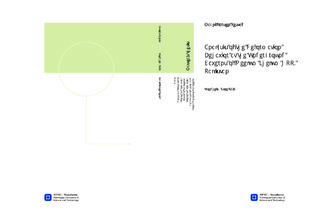| dc.description.abstract | Many risks and challenges are associated with large scale underground projects. Stability issues are typically related to high stresses around the opening. Excavations will change the existent stress regime in the ground, inducing tangential stresses around the periphery of the opening. Failure of the rock mass will occur if the induced stresses exceed the strength of the rock. In weak and deformable rocks, the process of failure may present as plastic deformation, better known as squeezing. Squeezing can be described as the time-dependent inward movement of the rock material towards the opening when subjected to tangential stress (Panthi, 2006). The squeezing phenomenon was reviewed in relation to the deformations experienced in the powerhouse cavern at the Neelum Jhelum HPP (NJHPP) in Pakistan. The cavern is constructed in fractured sandstone, with thin to thick layers of locally sheared siltstone and mudstone. The mean overburden is 430 m. Since constructions began in 2011, the deformations have been monitored progressively with convergence lines and extensometers. The highest deformation is seen for the middle sections, with up to 282 mm convergence of the walls. The objective of this study involves an evaluation of available methods for prediction and assessment of squeezing in large scale caverns. The deformation characteristics for the Neelum Jhelum HPP cavern are essential input for the analysis. Proper knowledge on the ground conditions and influencing factors are essential for a well-founded evaluation of the methods. The deformation data reveal a complex interplay of internal and external factors influencing the behavior of the rock. Weak and fractured rocks combined with the high overburden are the main cause for the high degree of squeezing. However, the variation in measured deformation is believed to be caused by the changing external factors. The two major influencing events accelerating the deformation was the excavation of the bulleted gate niches in the downstream wall (4 niches), and the excavation down to the bottom floor level. The intersecting and potentially water bearing shear zone may be the reason for the highest deformations observed for the middle sections.In this study, five methods are selected for the assessment of squeezing for five sections in the cavern. The empirical method by Goel (1994) and the Q-system are used for prediction of the occurrence of squeezing, along with the semi-analytical method by Hoek and Marinos (2000) without support pressure. Analysis of squeezing and required support pressure is investigated using Hoek and Marinos with support and with the CCM by Carranza-Torres and Fairhurst (2000). Extensive plastic analysis using the 2D finite element program Phase^{2} is included. Calibration of the stress conditions and rock mass deformability are an essential part of the numerical analysis. The deformation characteristics of a tunnel are less influenced by external factors, relative to the complexity involving a powerhouse cavern. The methods applied typically only consider stress conditions and rock mass quality and strength, and most have been developed for circular tunnels. The analysis of the deformations in the NJHPP cavern indicate that for a powerhouse cavern the complex excavation layout, large dimensions and excavation progress are major influencing factors. The effects of these are not properly considered by any of the selected methods. Consequently, special considerations are necessary for the analysis of squeezing in large caverns. | nb_NO |

